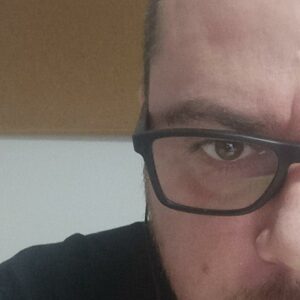 Continuing the most aggressive series of rate hikes since the 1980s, at the end of the January meeting of the Federal Reserve’s Federal Open Market Committee (FOMC) raised the nominal interest rate by 25 basis points to a range of 4.50% to 4.75% due to the easing—but not taming—of inflation which the FOMC is “strongly committed” to returning inflation to its 2% objective.
Continuing the most aggressive series of rate hikes since the 1980s, at the end of the January meeting of the Federal Reserve’s Federal Open Market Committee (FOMC) raised the nominal interest rate by 25 basis points to a range of 4.50% to 4.75% due to the easing—but not taming—of inflation which the FOMC is “strongly committed” to returning inflation to its 2% objective.
This marks the eighth consecutive hike and the biggest consecutive rate hike on record. Since the rate hikes began, the FOMC raised rates in March 2022 (+25 points), May 2022 (+50 points), June 2022 (+75 points), August 2022 (+75 points), September (+75 points), November 2022 (+75 points), December 2022 (+50 points), and now in February 2023 (+50 points). This is equivalent to a rise of 4.5 percentage points over the last year.
The next FOMC meeting occurs during the third week of March, and according to Chairman Jerome Powell, will most likely feature another rate hike and additional monetary tightening.
In a short prepared statement released at the conclusion of the meeting, the FOMC said:
“The Committee anticipates that ongoing increases in the target range will be appropriate in order to attain a stance of monetary policy that is sufficiently restrictive to return inflation to 2% over time,” the FOMC wrote. “In determining the extent of future increases in the target range, the Committee will take into account the cumulative tightening of monetary policy, the lags with which monetary policy affects economic activity and inflation, and economic and financial developments.”
“In addition, the Committee will continue reducing its holdings of Treasury securities and agency debt and agency mortgage-backed securities, as described in its previously announced plans. The Committee is strongly committed to returning inflation to its 2% objective.”
“In assessing the appropriate stance of monetary policy, the Committee will continue to monitor the implications of incoming information for the economic outlook. The Committee would be prepared to adjust the stance of monetary policy as appropriate if risks emerge that could impede the attainment of the Committee’s goals,” the FOMC concluded. “The Committee’s assessments will take into account a wide range of information, including readings on labor market conditions, inflation pressures and inflation expectations, and financial and international developments.”
At the conclusion of the meeting, Chairman Powell said price stability is a key trend to watch in relation to the health of the future market to make sure inflation is on a downward path. He also warned against complacency because inflation has come down, but it is still much higher than it should be, so policymakers should be aware of this.

First American Deputy Chief Economist Odeta Kushi’s said on the rate hike:
“The last several months have delivered good news on inflation. Goods inflation has been declining, and housing inflation will follow suit once the lag catches up,” Kushi said. “However, service sector inflation is still rising. One reason is the lagged shelter component, and the other is tight labor market conditions.”
“The Fed is paying close attention to wage growth and labor market tightness, particularly in the service sector, for signs of a reacceleration of inflation. While wage growth is slowing and job openings are declining, both are still high, suggesting that labor demand continues to outstrip supply. This means that services providers are still struggling to find labor, their primary input, keeping the unemployment rate near historic lows and the pressure on wages high.”
“If evidence over the coming months suggests that inflation is on a consistent downward trend, mortgage rates may continue to decline and activity in the housing market will pick up—just in time for spring home-buying season,” Kushi concluded. “If high inflation proves more stubborn, especially in the service sector, the Fed may respond by further tightening the screws on monetary policy, putting upward pressure on mortgage rates.”
Realtor.com Manager of Economic Research, George Ratiu also said on the matter:
“The Federal Reserve’s rate-setting committee is expected to continue raising the short-term policy rate, but resort to a smaller 25 basis point hike,” Ratiu said. “The central bank has been engaged in an aggressive monetary tightening over the past year aiming to subdue inflation which ran at 40-year highs for the better part of 2022.”
“The rate hikes, combined with the reduction in the bank’s balance sheet, have resulted in a noticeable increase in borrowing costs and a slowdown in consumer demand, especially in real estate markets. The main price measures—the Consumer Price Index and the Personal Consumption Expenditures index—have notched visible slowdowns over the past five months. In addition, recent wage data also highlight moderation in the growth trajectory, further taking steam out of the inflationary engine.”
“These moves come as economic growth remains on a cautiously optimistic path. The initial estimate of fourth quarter 2022 gross domestic product came in at an annual rate of 2.9%, a solid reading. January 2023 initial jobless claims dropped below 200,000, while the unemployment rate slid to 3.5%, the same low level seen in pre-pandemic January 2020. Even with tech and real estate sector layoffs capturing headlines, the labor market remains on solid footing, with more open jobs than available unemployed workers. At the same time, companies are reporting record earnings. By a host of measures, the start of this year signals the possibility that the Fed may succeed in achieving the soft landing it has been aiming for.”
Ratiu continued:
“Even with a resilient economy, today’s rake hike will impact consumers who will experience higher borrowing costs. With the Fed’s fund rate serving as a basis for the prime rate, Americans will see higher interest rates for credit cards, automobile and personal loans, as well as adjustable-rate mortgages.”
“For real estate markets, today’s decision by the Fed will keep a floor under mortgage rates for the next couple of months. The Fed’s short-term rate does not directly impact long-term mortgage rates, however, rising borrowing costs trickle throughout the financial system. The 30-year fixed mortgage rate has moved in the 6% – 7% range since mid-November 2022. While it has been on a downward glide, it remains about 260 basis points above last year.”
“For buyers looking at a housing market with a growing number of homes for sale and retreating prices, there is hope that this year will offer more opportunities,” Ratiu continued. “Median list prices have dropped 11% from their June 2022 peaks. For the buyer of a median-priced home, these lower prices translate into a $9,800 savings on a 20% down payment. This is a welcome shift for households still feeling the squeeze of higher prices and elevated borrowing costs.”
Bright MLS Chief Economist Dr. Lisa Sturtevant had the following comments on tomorrow’s Federal Reserve announcement:
“The Federal Reserve is expected to raise interest rates by 0.25 percentage points tomorrow. This will be the eighth time in the last year that the Fed has raised rates, but this move marks a shift from the aggressive approach of 2022 to a more cautious strategy as we head into 2023. The modest rate increase, which has been telegraphed very clearly by Chairman Powell, gives the Fed time to wait for more clarity in the economic data.“
“And frankly, right now, the economic picture is a bit of a hodgepodge. The overall economy posted strong growth in the fourth quarter, but looking under the hood reveals some weaknesses, particularly in consumer spending. Overall inflation has fallen for six months in a row, though the prices of some goods, and especially services, remain elevated. The job market has posted strong gains and unemployment is low, but high-profile layoff announcements have drawn attention.”
“The housing market had softened considerably in the fall, but there are signs that the market has already begun to pick back up. While the Fed may be acting cautiously to monitor economic conditions, home buyers seem like they are ready to jump back into the market. Pending Home Sales posted a surprising increase in December and lower mortgage rates in January brought more home shoppers into the market. As the Federal Reserve eases off rate hikes, mortgage rates will stabilize or come down further, which should spur a strong spring housing market. Inventory will again be the primary constraint on the market. More new housing construction is necessary not only to bring balance to the housing market, but also to contribute to economic growth.”
Voting for the monetary policy action were Jerome H. Powell, Chair; John C. Williams, Vice Chair; Michael S. Barr; Michelle W. Bowman; Lael Brainard; Lisa D. Cook; Austan D. Goolsbee; Patrick Harker; Philip N. Jefferson; Neel Kashkari; Lorie K. Logan; and Christopher J. Waller.





